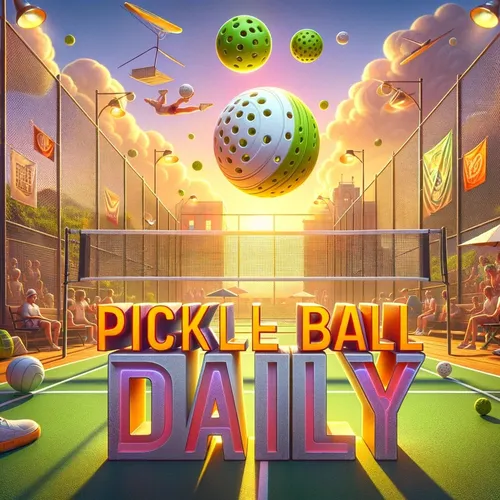July 19: Pickleball's Modern Summer Tournament Tradition
- Author
- Quiet. Please
- Published
- Sat 19 Jul 2025
- Episode Link
- https://www.spreaker.com/episode/july-19-pickleball-s-modern-summer-tournament-tradition--67036443
For listeners eager to dive into pickleball history, July 19 might not ring a bell like some of the sport’s founding moments in 1965 or its first tournament in the spring of 1976, but let’s explore what typically happens on this date in the modern pickleball universe, since today, July 19, often lands right in the heart of the summer tournament season, when pickleball courts across North America are buzzing with competition and community.
Let’s zoom in on a tournament that, in most years, has its grand finale on July 19—weather permitting. The Pickle in the Peaks tournament in Summit County, Colorado, is a prime example. According to recent tournament organizers, this annual event kicks off on July 17 and rolls through July 19, culminating with the men’s and women’s doubles finals on the last day. The tournament is hosted by the Summit County Pickleball Association and the town of Silverthorne, Colorado, and features a round-robin format with divisions for all skill levels, from newcomers to advanced players. What makes this event especially notable for July 19 is that it’s a day of finals—when medals are awarded, top players are recognized, and the community celebrates another successful season on the courts of Rainbow and Trent Parks in Silverthorne.
The Pickle in the Peaks tournament is part of a broader tradition of grassroots pickleball events that have sprung up nationwide, reflecting the sport’s explosive growth. Tournaments like these are a direct result of pickleball’s journey from a casual backyard invention to a sport with a formal structure and passionate following. They embody the spirit of the game’s founders—Joel Pritchard, Bill Bell, and Barney McCallum—who crafted pickleball on Bainbridge Island, Washington, in the summer of 1965. Their original goal was to create a game that was accessible, fun, and brought people together, and events like Pickle in the Peaks are a living testament to that vision.
Pickleball’s early days saw the first permanent court built in 1967, the formation of a corporation to protect the sport in 1972, and the first tournament in 1976 in Tukwila, Washington, where David Lester became the first champion. The establishment of the United States Amateur Pickleball Association in 1984 gave the sport its first national governing body and rulebook, helping to standardize play and fuel growth. By the summer months of the twenty-first century, pickleball has become the fastest-growing sport in the United States, with millions of players and thousands of courts nationwide.
What is remarkable about July 19 in the context of pickleball is not a singular historic milestone, but rather the ongoing celebration of the sport’s culture—where players of all ages and skill levels come together for friendly but competitive matches, much like the original games played by the Pritchard, Bell, and McCallum families. On days like today, players might use Selkirk Pro S1 outdoor balls, enter scores into the DUPR rating system, and compete for medals in a variety of divisions. These events are a microcosm of pickleball’s evolution from a family pastime to a community phenomenon, highlighting how the game has stayed true to its roots while embracing competitive spirit and inclusivity.
So while July 19 may not be etched in history books as the birthdate of pickleball or the site of its first championship, it is a day when the sport’s spirit is on full display across the country—whether in Colorado’s mountain resorts, local parks, or community centers. For pickleball enthusiasts, every day on the calendar offers a chance to connect, compete, and celebrate a game born from creativity, camaraderie, and a touch of whimsy. Thank you for tuning in to this slice of pickleball history. If you enjoyed today’s story, remember to subscribe for more fascinating tales from the world of pickleball. This has been a quiet please production, for more check out quiet please...
